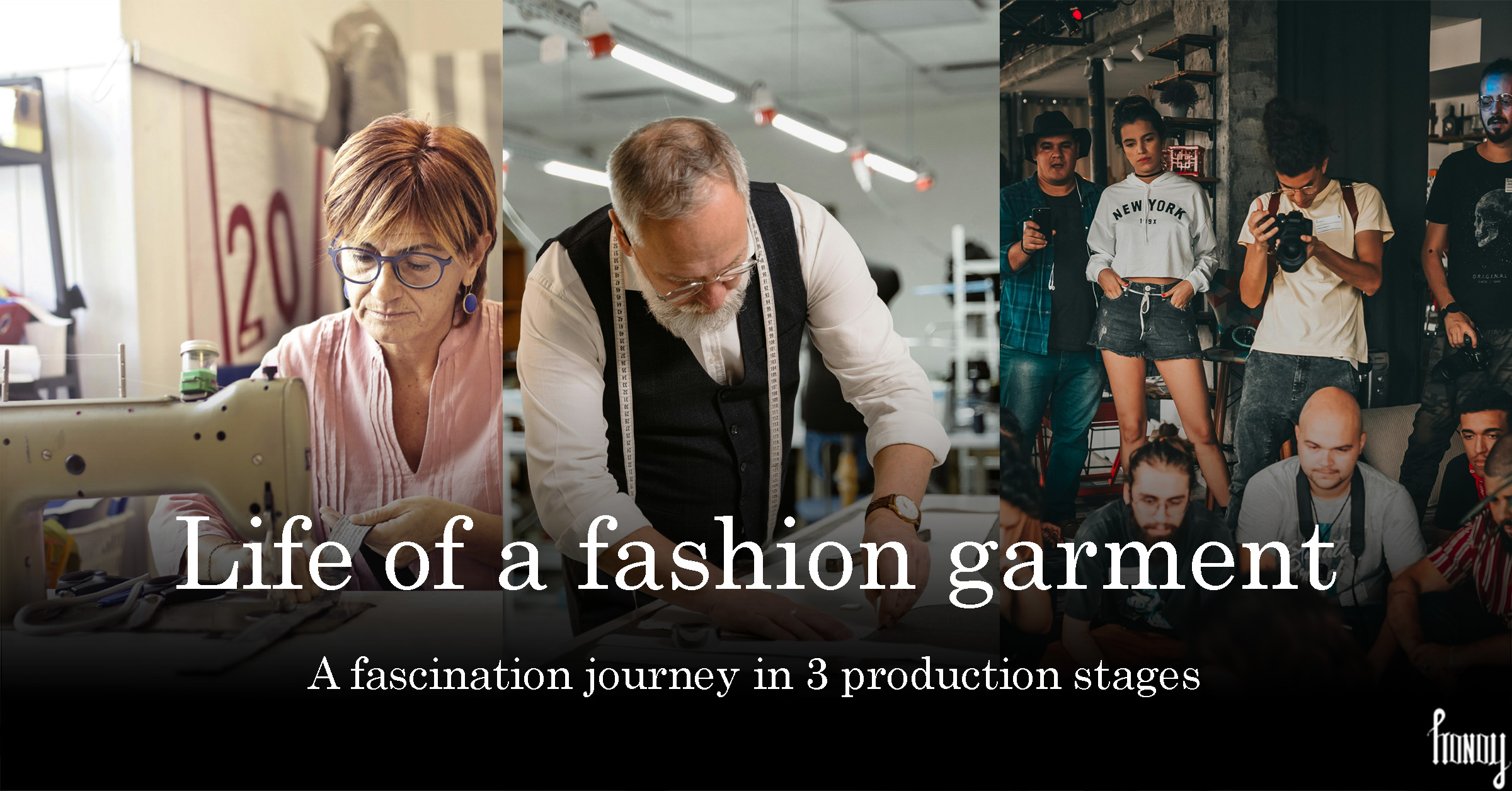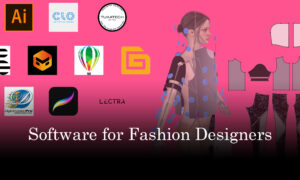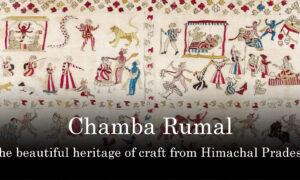Introduction
Fashion is not simply the business of making clothes, rather it is the art of telling a story. This blog will take you through Life of a fashion garment in 3 production stages. Every individual human being wishes to represent their unique style and personality and clothes help a lot in doing that. And just like the people who wear them, every piece of clothing has a unique journey of its own.
This post will chronical the life of a garment from conception and designing to reaching into its right full owner’s wardrobe. We will discover the surprising and intricate stages that garment goes through. Because this is a long discussion, I have simplified and divided the stages into three phases: the ‘pre- production stages ‘, the ‘ production stages ‘ and the ‘post – production stages ‘.
The ‘ Pre – production stages ‘
Research and Inspiration
The is level zero. Every garment before it becomes a reality, is a fantasy of the designer. But as it is easier said than done, in order to keep the creativity levels high and original, designers always conduct a lot of research to come up with an inspiration for their next collections. These types of research are essential as they include understanding and study of current trends and forecasts of colours, silhouettes, and styles. And also, what the customers demand, and needs are. These elements, all go into the making of ‘mood boards.’
Fabric and accessory Sourcing
As we have understood that designs are not standalone, but they are fantasies that need material to be turned into reality. So, a thorough sourcing of fabrics that are trending in the market, based on new technology, demand, and season is done. Simultaneously, to satisfy the need of the customer of presenting ‘new’ designs, accessories are also to be researched and sourced from the market. From buttons, zippers, embroidery material, etc. anything that goes well with the designer’s inspiration for the next collection is collected. These sourcing are then used to create the fabric and accessory boards.
Design and development
Once the sourcing has been doon and inspiration has been researched, the designers will start the process of designing. Immersing themselves deep into the results of their research, the designer will come up with styles that they envision will cater to the need of the client and the industry. These doodles are then developed with flat sketches that have all the technical details for the next stage.
Sampling
Now that the designer has creates the blueprints for the new designs, these designer sketches are then handed over to the sampling department. The pattern master, cutter, seamstress, embroiderers all collaborate to bring the designer’s visions to life. The designer is also involved in every stage here so that his designs are realised exactly the way he is envisioning them.
Fittings
Once a garment has been created, it is then put on a dress form or a live model to see if the fitting of the garment has been achieved as intended. If the garment is intended for a fashion shows, models are used and if the garment is intended for the client itself, fittings are done with the customer. Alterations are done at this stage only in order to achieve the best intended fit for the design.
The ‘ Production stages ‘
Production planning
Once the fitting pattern of a garment is approved, then the production cycle is planned. Here, a timetable is created based on which it is decided when the materials will be sourced etc., and other responsibilities are handed over with deadlines. The planning stage needs to be thorough as any miscalculation can push back the entire production cycle. These delays affect timely deliveries to the client and are a setback to the business’ reputation.
Pattern making
The production patterns are the blueprints based on which garments are cut and sewn. These are to be created with extreme caution as any mistake in them can render entire lot of productions waste. A deep understanding and study of standard clothing sizes is essential for creating the perfect garment for the customer.
Cutting, sewing, and finishing
With patterns in hand, fabrics are laid out in layers and cut into the designated pieces. The key factor is to maintain precision in order to minimize fabric wastage and ensure uniformity across garments of the same style. After this skilled seamstresses and tailors stitch the cut pieces together, following the pattern and design specifications. Quality control is vital at this stage to maintain consistency. Once stitching is done, garments receive finishing touches, which may include pressing, embroidery, or attaching labels and care tags. This stage adds finesse to the final product.
Quality control
Before any garment leaves the production area, it is thoroughly checked for quality assurance. These garments are the silent ambassadors of any business so them being perfect is absolutely necessary. The quality check includes inspecting for stitching defects, fabric flaws and sizing issues. Any garment that does not meet the standards issued, is sent back for correction, and does not leave the production floor unless it passes all quality testing.
The ‘Post – production stages ‘
Photoshoot & cataloguing
Once the designs have been sampled or mass produced, depending on the requirement the cataloguing of these garments is done. The various purposes for which photoshoots are done include promotional material and archiving for the designer to reflect back on. Depending on the business model and the aesthesis of the designer and the price bracket of the garment, the photoshoots can range from simple front and back clicks to elaborate locational shoots that lasts for days.
Marketing and promotion
The next stage that follows development of promotional material is marketing of the new designs. Participation in fashion shows and trade fairs, inviting prospective buyers to see the collections in person, advertising in local media, collaborating with celebrities and influences, these are all methods by which fashion businesses promote their new creations.
Sales and distribution
Once the garments are ready for distribution, they are shipped to retailers, wholesalers or directly to the end customer, all depending in the business model. How strong is your distribution channel contributes to the commercial success of any garment, as this ensures reaching to the right market and customer.
Feedback
Any designed product and any business involved in the creation of designed products, can only hope to improve, and provide best customer satisfaction, if they receive and honor honest feedback. Because design is a cyclic process, every feedback from the customers on the quality of the garment will help in better understanding of the customer expectations and mindset, which the designer will keep in mind when starting the research for his next collection of designs.
This order of stages is not a rigid one. Depending on the business model, these steps are customised and mixed and matched depending on the need of the hour. For example, for small designers and boutiques, the production stage is almost non-existent as they are more towards customization based and make only one piece at a time. So, depending on the fashion business model these stages will vary in order and importance, but they are all going to be a part of the life of the garment being produced.

Conclusion
In conclusion, the life of a garment is a fascinating journey that begins with a spark of inspiration in the designer’s head and ends up in the customer’s hand. Understanding the many stages, a garment goes through, both before, through and after production, allows us to appreciate the complexity of the fashion industry. Each of these stages have their own set of rules and guidelines and you can choose to be a part of any of these as a specialist of any of the stages discussed above.
While these are not set in stone, each of these stages can be manipulated as per the need of the fashion business setup and the design team involved. At the end of the day, these are standard industry practices that have shaped the modern work process of the fashion industry. So, what do you think? Did I miss out on anything important or was this a surprise information for you.





























Pingback: Top 10 Design Colleges Of India